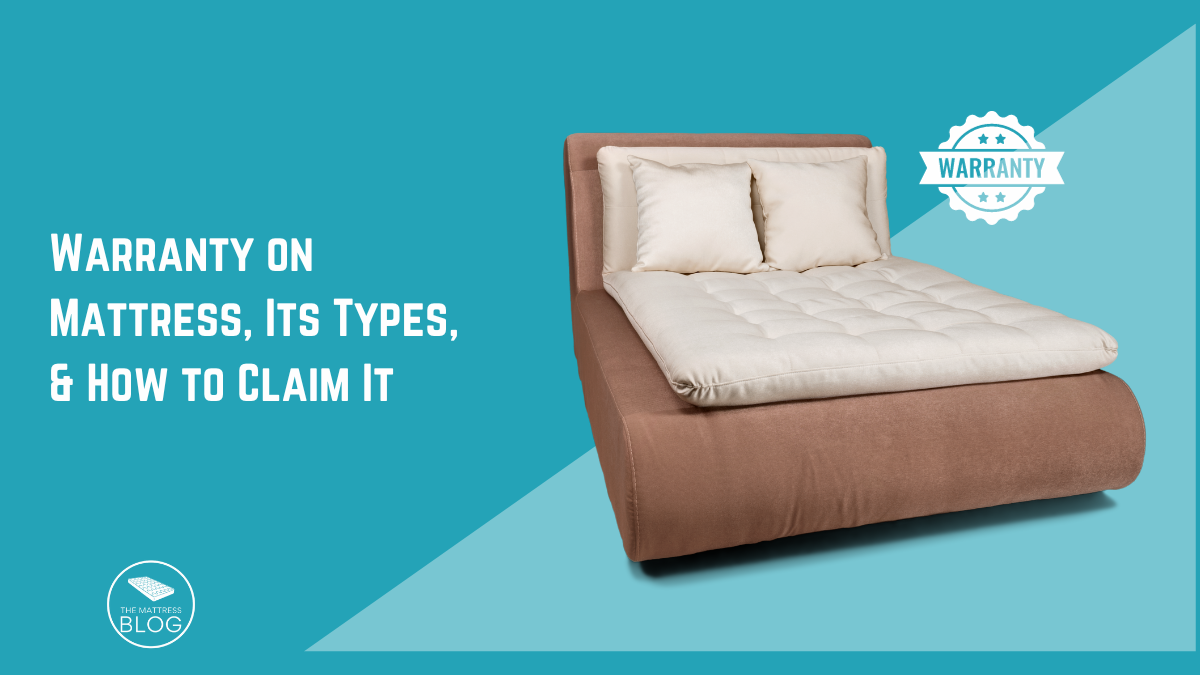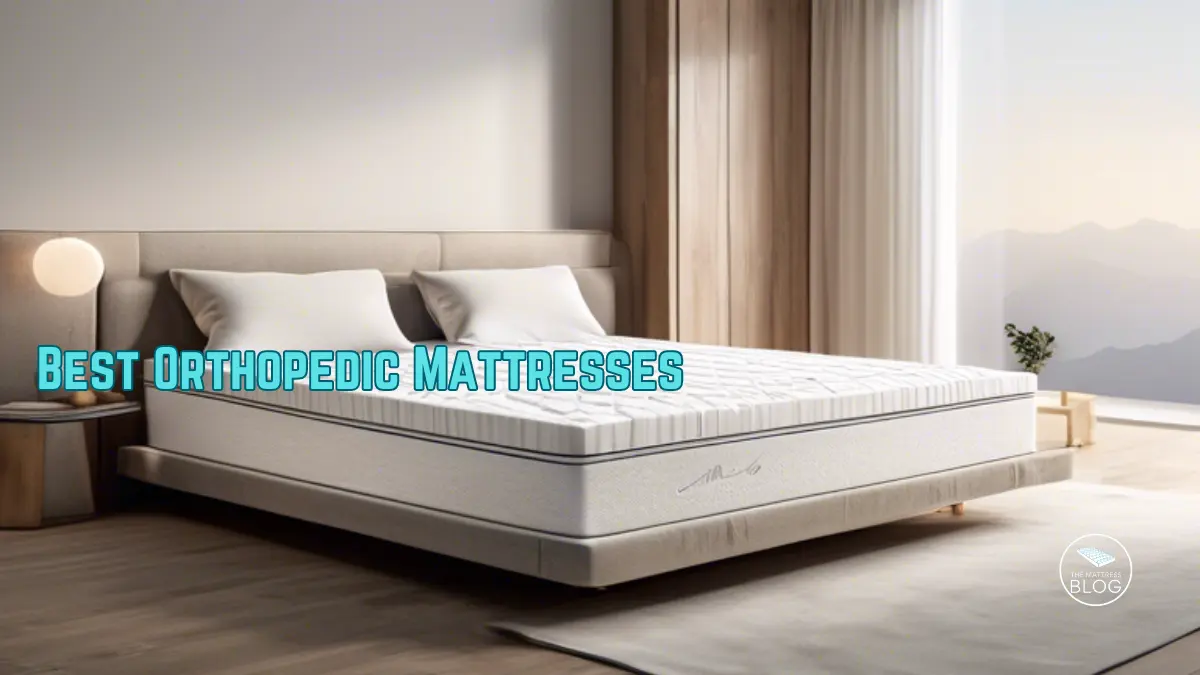Our mattress significantly determines how comfortable and cozy we feel while enjoying a good night’s sleep. Think of it as a magical sanctuary where dreams come true! However, like any cherished possession, we want our mattress to last long and remain comfortable.
That’s why warranty on mattresses exist, they serve as promises from the manufacturers to keep our beds comfortable and in excellent condition. This article will delve into the world of mattress warranties, exploring how they contribute to a peaceful sleep and ensure our mattress has our back.
What is a Mattress Warranty?
A mattress warranty is a contractual agreement between the manufacturer or seller and the customer, outlining the terms and conditions under which the mattress will be repaired, replaced, or refunded in case of a defect or fault.
Warranties vary in length, coverage, and type, so it’s crucial to carefully read and understand the warranty on mattresses before purchasing. Mattress warranties can be categorized into three main types: written, spoken, and implied.
Written Warranties
Written warranties are not legally required but are commonly provided by most manufacturers or sellers. These warranties are typically included with a mattress purchase and are designed to provide a clear understanding of the coverage and terms.
When reviewing a written warranty on mattress, pay attention to the length, what is covered, and any exclusions or conditions that may void the warranty.
Spoken Warranties
Sometimes, a salesperson may provide a verbal commitment regarding the mattress warranty. However, it’s essential to obtain written confirmation of any spoken warranties to ensure their validity and to have a record of the agreed-upon terms.
Implied Warranties
Implied warranties are dictated by law and apply to nearly all purchases, including mattresses, even if they do not have a written warranty on mattresses. These warranties are based on the principle that the product should be fit for its intended purpose and free from defects.
Implied warranties can last up to four years and cover two main categories: the warranty of merchantability and the warranty of fitness for a particular purpose. The warranty of merchantability ensures that the product will perform its essential functions.
In contrast, the warranty of fitness for a particular purpose applies when a seller advises the customer to purchase a product for a specific use. It’s important to note that implied warranties can vary by state, so it’s advisable to consult your state’s consumer protection office for more information.
Mattress Warranty vs. Sleep Trial: What’s the Difference?
While a mattress warranty protects against defects and faults in the product, a sleep trial allows customers to try the mattress and determine if it meets their comfort preferences.
Sleep trials typically range from 90 to 365 days, during which customers can return the mattress for a full refund if unsatisfied. It’s important to note that warranties do not cover customer dissatisfaction or a change of mind after the sleep trial period has ended.
Types of Mattress Warranties
When investing in a good night’s sleep, it’s important to understand the type of support your mattress warranty provides. Each mattress warranty comes with unique promises and coverage as the foundation of assurance for maintaining a sanctuary of relaxation.
In this exploration, we will uncover the distinct types of mattress warranties, shedding light on their coverage and empowering you to make informed decisions about the longevity and comfort of your nightly retreat.
Limited Warranty
A limited warranty for mattresses guarantees quality and durability for a specific period. It covers defects in materials and workmanship. However, it’s essential to recognize the limitations associated with it. Typical constraints include normal wear, personal preference changes, and damages beyond the manufacturer’s control.
Adhering to the maintenance guidelines provided is crucial for optimal coverage. Understanding these nuances ensures realistic expectations regarding the protection offered by a limited warranty on mattresses.
Full Warranty
A full mattress warranty goes beyond limitations, symbolizing unwavering commitment from the manufacturer to ensure the quality and performance of their product for a specified duration. This comprehensive coverage includes protection against defects in materials and workmanship, often extending to encompass wear and tear.
The advantage lies in the extensive shield it provides, offering consumers peace of mind regarding the longevity of their mattress. Additionally, full warranties may include repair or replacement services, further enhancing the overall value and satisfaction of investing in a mattress.
Understanding Warranty Terms
Getting a good night’s sleep is like having a superpower, and our mattress serves as a trusted sidekick. But did you know that mattresses come with promises called warranties? It’s almost like a magic spell that comforts our bed.
In this journey of understanding, we will unravel the secrets behind mattress warranty terms in a way that’s easy to grasp. Imagine it as a roadmap guiding us through sleep promises, helping us know exactly what to expect and how to keep our sleep haven in tip-top shape. Let’s embark on this adventure of bedtime wisdom together.
Warranty Duration
Warranty duration is like a time-travel ticket, determining how long the manufacturer promises to support your mattress. Short-term warranties provide immediate assurance, while long-term warranties offer an extended protective embrace, reflecting the manufacturer’s confidence in the mattress’s durability.
The warranty length depends on materials and design, which reveal the maker’s trust in their product. Understanding these factors helps you select a warranty aligned with your mattress for lasting bedtime peace.
Pro-rated vs. Non-Pro-rated
Non-Pro-rated Warranty
A non-pro-rated mattress warranty offers full coverage for the specified duration. If there are any defects in materials or workmanship, the manufacturer will repair or replace the mattress at no additional cost to the consumer.
Pros:
- Straightforward and easy-to-understand terms
- No extra costs during the warranty period
- Provides a high level of consumer confidence
Cons:
- The initial mattress price might be slightly higher due to the inclusion of potential future repair or replacement costs
Pro-rated Warranty
A pro-rated mattress warranty involves diminishing coverage over time. As the mattress ages, the consumer may be responsible for a portion of the repair or replacement costs, usually calculated as a percentage of the original purchase price.
Pros:
- Potentially lower initial mattress prices
- Some coverage is maintained even in the later years
Cons:
- Additional costs for the consumer as the mattress ages
- Complexity in understanding the diminishing coverage over time
Common Warranty Issues
When purchasing a mattress, we expect it to be comfortable and durable. The mattress warranty is a company’s promise to fix or replace it if something goes wrong. However, common problems with mattress warranties can sometimes make things tricky.
One significant issue is that people often misunderstand what the warranty covers, leading to confusion. Another challenge arises when the mattress
Mattress Sagging
Mattress warranties often focus on preventing sagging and specifying conditions for coverage. Manufacturers outline acceptable sag depth and guidelines for repair or replacement eligibility.
Consumers can maintain mattress integrity and warranty eligibility by using the recommended support system, rotating the mattress, and avoiding concentrated weight in specific areas. Understanding warranty terms and implementing preventative measures help protect the mattress investment and address potential sagging issues efficiently.
Tips for Preventing Mattress Sagging
Use a Suitable Foundation
- Place your mattress on a foundation or bed frame that provides consistent support.
- Different mattresses may have specific foundation requirements, so following the manufacturer’s recommendations is important.
Rotate and Flip Your Mattress
- Regularly rotate your mattress from head to foot and flip it if it’s designed to be reversible.
- This helps distribute the wear and tear evenly, preventing concentrated sagging in specific.
Invest in a quality Mattress
- Choose a mattress from a reputable manufacturer known for using quality materials and construction- High-quality is more durable and resistant to sagging.
Vary Your Sleeping Positions and Rotate Pillows
- Changing the placement of your pillows regularly and varying your sleeping positions can help prevent repetitive stress on specific areas of the mattress.
- This reduces the likelihood of sagging.
Stains and Damage
Stains and damage can impact the warranty on mattress. To maintain warranty protection, following proper mattress care guidelines is crucial. Here’s how you can do that:
Promptly Clean Spills
- Clean any spills on your mattress promptly to prevent them from seeping into it and causing stains.
- Use appropriate cleaning methods and products recommended by the manufacturer.
Use Protective Covers
- Use a mattress protector or mattress cover to shield your mattress from spills, stains, and potential damage.
- Investing in a quality mattress protector is like having insurance for your mattress.
Follow Recommended Cleaning Practices
- Adhere to the manufacturer’s recommended cleaning practices for your specific mattress.
- This helps maintain the cleanliness and integrity of the mattress, ensuring continued warranty coverage.
Making a Warranty Claim
Making a warranty claim for your mattress is similar to asking for help when something is wrong. Here are the steps to follow:
Review the Warranty Terms
- Thoroughly read and understand the terms of your mattress warranty, including coverage details and conditions.
- This will help you know what is covered and what steps you need to take.
Document the Issue
- Identify and document the problem with your mattress, noting any visible damage, sagging, or unusual issues.
- This information will be important when filing a warranty claim.
Contact the Retailer or Manufacturer
- Contact the retailer where you purchased the mattress or directly contact the manufacturer to report the issue.
- Inquire about the specific steps and documentation required for making a warranty claim.
Provide Necessary Information
- Furnish relevant details, such as the date of purchase, proof of purchase, a clear description of the problem, and any supporting documentation or images required for the warranty claim.
Follow the Manufacturer’s Instructions
- Adhere to the specific instructions provided by the manufacturer for initiating a warranty claim.
- This may involve filling out forms, arranging inspections, or submitting additional documentation.
Tips for Maximizing Your Mattress Warranty
Getting the most out of your mattress warranty is like taking care of a promise that ensures your sleep comfort. Here are some tips to help you make the most of your warranty:
- Use the proper bed frame or foundation recommended by the manufacturer
- Rotate your mattress regularly to distribute wear evenly
- Invest in a high-quality mattress to ensure durability
- Vary your sleeping positions and rotate your pillows for even pressure distribution
- Follow proper mattress care guidelines, including using protective covers and promptly cleaning spills
By following these tips, you can improve the longevity of your mattress and enhance your warranty coverage.
Proper Mattress Care
Proper mattress care is essential for maximizing your warranty. It involves regular cleaning, maintenance, and the use of mattress protectors.
Regular Cleaning and Maintenance
- Vacuum the mattress surface regularly to remove dust and debris.
- Spot clean any stains using a mild detergent and follow the manufacturer’s specific care instructions.
- This helps prevent issues that could affect warranty claims.
Click here for a complete guide on Best Stain Remover for Mattress
Using Mattress Protectors
- Invest in a mattress protector to act as a barrier against spills, stains, and potential damage.
- A quality mattress protector helps keep your mattress clean and in good condition, which is often required for warranty coverage.
- In case of accidental spills or stains, a protector reduces the likelihood of damage and improves the chances of a successful warranty claim.
Understanding Terms and Conditions
Understanding the terms and conditions of your mattress warranty is crucial for a clear roadmap to ownership. Here are two important aspects to consider:
Reading the Fine Print
- Take the time to read and understand the fine print of your mattress warranty.
- It contains essential details about what is covered, for how long, and any specific conditions or exclusions.
- Knowing the exact warranty terms will help you set realistic expectations and avoid misunderstandings.
Knowing What Can Void the Warranty
- Familiarize yourself with the actions or situations that can void your mattress warranty.
- These may include using an improper bed frame, neglecting proper care and maintenance, or not following manufacturer guidelines.
- By being aware of these factors, you can avoid unintentional actions that could jeopardize your warranty coverage.
Understanding the warranty terms by reading the fine print and knowing what can void the warranty ensures a clear understanding of your rights and responsibilities as a mattress owner.
Warranty on Mattress from Mattress Firm
The warranty on mattress from Mattress Firm, like warranties from other mattress retailers, typically covers defects in materials or workmanship. However, the specific terms, conditions, and warranty duration can vary. Here’s what you need to know:
- Carefully review the warranty information provided by Mattress Firm for the particular mattress you’re considering.
- Pay attention to details such as the coverage period, any exclusions, and the process for filing a warranty claim.
- Following proper mattress care guidelines is advisable to maintain warranty eligibility.
- If you have questions or need clarification about the warranty, contacting Mattress Firm’s customer service or checking their website for detailed information is recommended.
FAQs About Mattress Warranty
Here are the most frequently asked questions (FAQs) about the warranty on mattresses.
How Do I Claim a Mattress Warranty?
To claim a mattress warranty, follow these general steps:
- Review the warranty terms and conditions.
- Document the issue with the mattress, including visible damage, sagging, or other problems.
- Contact the retailer or manufacturer where you purchased the mattress.
- Provide necessary information, such as proof of purchase.
- Follow the manufacturer’s instructions for initiating a claim and be patient during the evaluation process.
How Do Mattress Warranties Work?
Mattress warranties typically cover defects in materials or workmanship.
- The duration and terms of warranties may vary, with specific conditions for eligibility.
- To make a warranty claim, the owner must follow specific steps outlined in the warranty, such as providing proof of purchase and adhering to care guidelines.
Do Mattress Warranties Cover Sagging?
Many mattress warranties cover sagging, but the extent of coverage varies.
- Warranties often specify the acceptable depth of sag for a claim to be valid.
- Understanding the sagging criteria outlined in the warranty is important to determine eligibility.
How Do You Measure a Mattress for Warranty?
To measure a mattress for warranty claims related to sagging:
- Use a straight edge or taut string to measure the depth of the sag from the highest point to the mattress surface.
- Check the warranty terms for the specified threshold that qualifies for a warranty claim.
Is a Mattress Warranty Worth It?
Whether a mattress warranty is worth it depends on individual preferences and needs.
- Warranties provide peace of mind and protection against defects.
- Before deciding, consumers should consider the warranty duration, coverage details, and associated costs.
How Long Is a Warranty on Mattress?
Mattress warranties vary in duration, with common lengths ranging from 5 to 20 years. Some higher-end mattresses offer longer warranties to reflect confidence in their durability.
Conclusion
Understanding your mattress warranty involves key steps like reviewing terms, documenting issues, and following specific claim procedures. The coverage duration and conditions can vary, emphasizing the importance of careful consideration before purchase.
As a final encouragement, being proactive in mattress care, such as regular cleaning, using protectors, and adhering to guidelines, contributes to a longer mattress lifespan and enhances the likelihood of a successful warranty experience. So, embrace the protection your warranty on mattress offers and ensure your mattress remains a cozy haven for restful nights.





